 |
|
Copyright © 2003 J. Jeffrey Bragg |
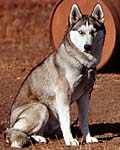
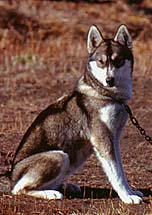
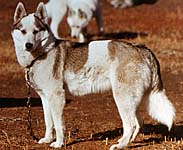
 |
|
Copyright © 2003 J. Jeffrey Bragg |



Pike Lake: Another Move for Markovo
ONE
MORE WINTER like the one we had just gone through would finish us
both off, we were convinced. In the summer of 1974 Betsy and I sold
the bald-headed "Brush Farm" on the highway and bought another in a
more sheltered location, near Pike Lake Provincial Park in the
Dundern Hills near the South Saskatchewan River.
In a bid to increase the breadth of our
genetic base, that summer we imported ASARI OF MANAHTOK (a young
bitch by CH. MIKIUK TUKTU TORNYAK out of WILLI-WAW'S GALE OF CUPID, a
dam that Gary Egelston had obtained with help from Larry Prado, bred
by Mildred Morton of North Conway NH) and PATOU OF MONTE ALBAN (by
ROWAN'S KENT ex WILLI-WAW'S XIU OF VIXEN) whom we bought from KENT's
owners, a stud-service puppy bred by Larry Prado. ASARI was a nice
little long-coated light sable bitch, imported in whelp to VANKA OF
SEPPALA. We farmed her out on co-ownership to Betsy's friend Barbara
Bailey, who had already bought RAGA OF MARKOVO from the previous
winter's litter by SHANGO and HELEN. Unfortunately, ASARI had only
one puppy, which was so large it suffocated in the birth canal as the
first-time mother struggled to give birth to it. PATOU was only a
year old when we got her, so we did not breed her that
summer.
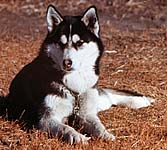 |
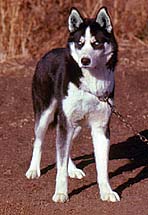 |
 |
|
|
|
|
That autumn and winter, SHANGO OF SEPPALA was mated to two more bitches -- I was determined not to repeat the mistake I had made with DITKO. I bred him to HOLLY OF MARKOVO in October 1974; she whelped the D-Litter on 4 December 1974. When HOLLY had whelped, I immediately bred him to NERA OF MARKOVO; I can remember ordering SHANGO, now over twelve years old, to come out of his dog house and breed the bitch. The weather was already severely cold and he would rather not have done the job. He mated NERA mostly to please me; we sat around in subzero temperatures through a tie that lasted the better part of an hour. The mating resulted in the A-Litter -- eight puppies -- on 7 February 1975.
University
politics was rife at WCVM and the Vet College had a high
turnover. A new department head was taken on for Veterinary
Microbiology; he took a dim view of employees having any
interests apart from their jobs, or being unwilling to come
in and work weekends to prepare for lab sessions. Betsy
became a target of Dr. Polley's misogyny; she was hounded
out of her job.
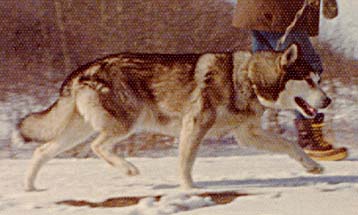
The loss of her position in
March 1975 together with the extreme hardship of rural
Saskatchewan conditions forced us to the realisation that
what we were attempting -- a self-sufficiency farm plus a
city job plus the Seppala project -- was too much for us. I
was depressed by the fact that because of the overabundant
Saskatchewan snow and prairie winds, it had proven
impossible to train the dogs seriously; we could not keep a
trail open and had managed only to get them out for a few
pleasure runs in those last two years.
(born 18 June 1962, by Ruffo of Seppala ex Bilka of Seppala
III)
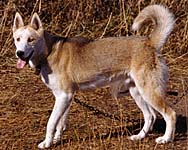 |
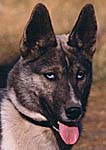 |
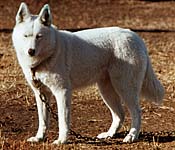 |
|
|
|
|
I had, after all, accomplished more or less what I had set out to do. Ten litters of young pure-Seppala stock had been produced in a five-year period. For the moment the strain was safe from extinction. We decided that it would be safer still if the stock were dispersed more widely. We had virtually the entire Seppala gene pool in one prairie dog yard. One crank with a shotgun could have virtually wiped out the Seppala strain in 1974-1975; Betsy had already been through a shotgun attack on her dogs while living in the city of Saskatoon and the possibility of another such incident was a constant worry. Thus we made the hard decision to disperse the MARKOVO stock that summer of 1975 and to leave Canada for awhile.
The Dispersal Sale
The amount of public interest was gratifying. The tide of the times (in terms of sleddogs) had already turned in 1973 with the establishment of the Iditarod Trail race. People were bored with the short, fast races on level trails; mid-distance and long-distance races were proliferating. Selling or placing thirty-seven Seppalas in one summer without compromising too much was not easy, but it had become possible. For some reason neither "Seppala" nor "Siberian" was a dirty word any longer. Over the course of the summer we successfully dispersed all of the MARKOVO stock, sold the farm and Betsy's city house. On the last day of October, 1975, Betsy and I crossed the Canadian border for the last time, headed south like wildfowl with the first blizzard of the season right behind us.